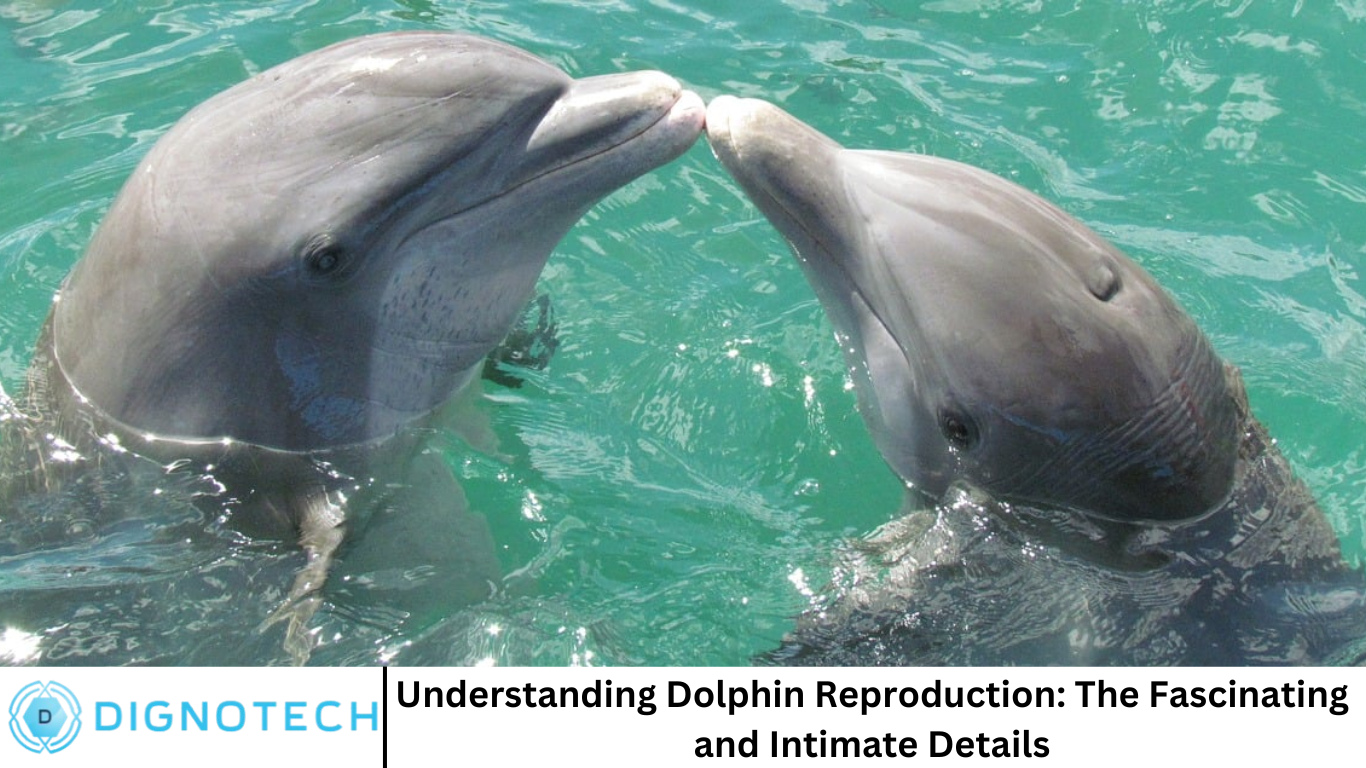Understanding Dolphin Reproduction: The Fascinating and Intimate Details

Hi everyone! How are you all doing? Welcome to dignotech.com! Dolphins, known for their intelligence, playfulness, and complex social structures, have long captured the fascination of humans. However, beyond their charming personalities and acrobatic displays, dolphins have an equally intriguing reproductive system and mating behavior that deserve closer inspection. From their sophisticated communication methods to the intricacies of courtship and mating, the reproductive process of dolphins is a fascinating topic. In this article, we will dive into the details of dolphin reproduction, offering insights into their unique mating rituals, social behaviors, and the challenges they face during reproduction.
The Reproductive System of Dolphins
Dolphins belong to the cetacean group, which also includes whales and porpoises. Like other mammals, dolphins give live birth and nurse their young, but the reproductive strategies of dolphins differ significantly from land mammals due to their aquatic environment. The male and female reproductive organs of dolphins are adapted to facilitate reproduction in the water, where external factors like temperature and pressure are constant considerations.
Male Dolphin Reproductive Anatomy
Male dolphins possess a penis that is retractable and not always visible, which is an adaptation to life in the water. The penis is housed in a small pocket beneath the body, and it emerges during mating. Male dolphins also have two testes, which are located inside their body cavity, and they can control when to release sperm.
Female Dolphin Reproductive Anatomy
Female dolphins have two functional ovaries, though typically only one will release an egg during ovulation. Their reproductive tract consists of two uteri, and they give birth to a single calf, although twins are rare. The cervix and uterus are designed to carry the developing fetus until birth, which usually occurs after a gestation period of 10 to 12 months, depending on the species.
Mating and Courtship in Dolphins
Dolphins are well-known for their playful nature, and this trait plays a significant role in their courtship and mating behaviors. Dolphins engage in a wide range of social interactions, and mating often happens as part of these interactions. Interestingly, dolphins don’t always mate exclusively for reproductive purposes—they also engage in sexual activity for social bonding, pleasure, and maintaining group dynamics.
Social Bonding and Hierarchy
In dolphin pods, males and females form complex relationships, and there is often a dominance hierarchy among males. While female dolphins may form strong bonds with one another, males tend to compete for access to females, which can lead to complex mating rituals. These interactions are not always about mating; instead, they can function as a way to establish and maintain social order within the pod. This hierarchical structure can influence mating opportunities for males, as dominant males typically have more access to females in estrus.
Courtship Rituals
Courtship among dolphins can involve a series of behaviors that help males attract females. Male dolphins often display acrobatic feats such as leaping, tail slapping, and spinning in the water. These displays serve to showcase the male’s health, strength, and agility, signaling to the female that he would be a strong mate. Dolphins are also known for their vocalizations, which play an important role in courtship. They communicate using a complex set of clicks, whistles, and body movements, which may help to establish compatibility and desire.
During mating, the female dolphin’s behavior is key to determining whether she is receptive to the male’s advances. Female dolphins may exhibit passive or active behaviors during mating, including positioning their bodies in ways that signal interest or rejection. The timing of mating is often synchronized with the female’s estrus cycle.
Estrus Cycle and Reproductive Timing
Unlike humans, dolphins do not have a menstrual cycle. Instead, females experience an estrus cycle, a period of heightened fertility during which they are most receptive to mating. The timing of this cycle varies between species but generally occurs every two to three years. Female dolphins give birth at intervals of two to four years, with the length of the interval depending on environmental factors, calf survival rates, and overall health.
Dolphins do not mate year-round. During periods of estrus, females will actively seek out mating opportunities, and males will compete for the chance to mate with her. The estrus cycle ensures that mating occurs when the female is most likely to conceive, improving the chances of successful reproduction.
The Mating Process
Dolphin mating is an intimate and sometimes competitive process. Males may engage in behaviors such as chasing, bumping, or nudging the female in an attempt to establish dominance or initiate mating. Once the female is receptive, the male will attempt to mate with her. In some cases, mating pairs may be accompanied by other males, creating a competitive and sometimes aggressive environment. However, the female has the ability to choose her mate, based on the male’s behaviors, displays, and dominance.
In many dolphin species, mating occurs in shallow water, where the pair can be easily observed. However, dolphins can also mate at deeper depths, depending on their environment and social structure.
Gestation and Birth
Once mating has been successful, the female dolphin enters the gestation period. The length of this period varies by species, but typically it lasts between 10 to 12 months. During gestation, the developing fetus is nourished by the mother’s body, which maintains a constant temperature and protects the fetus from environmental changes.
Female dolphins give birth to a single calf, although twins are extremely rare. The birth process is generally quick, and the mother will give birth to her calf tail-first. This prevents the calf from drowning upon emerging from the mother’s body. Once born, the calf is immediately able to swim to the surface and begin breathing air. However, it will remain close to its mother for protection, care, and nourishment.
Maternal Care and Calf Development
The relationship between a mother and her calf is one of the most important in dolphin social structures. Calves are born with the ability to swim and communicate but will rely heavily on their mother for survival in the early stages of life. For the first few months, the calf nurses from the mother, feeding on milk that is rich in nutrients and antibodies to support its immune system.
In addition to providing nourishment, the mother will guide and protect the calf, teaching it vital survival skills, such as hunting and navigation. Calves also learn essential social behaviors by interacting with other members of the pod, and their ability to communicate and cooperate with others is critical for their long-term success in the wild.
Sexual Behavior Beyond Reproduction
Dolphins are known for engaging in sexual behaviors that go beyond reproduction. These behaviors are often part of the social fabric of dolphin life. Sexual activity is not limited to the mating season; dolphins may engage in sexual interactions at various times for a variety of reasons, including establishing dominance, forming alliances, and strengthening social bonds.
Dolphins have been observed engaging in homosexual interactions, as well as mating with different species. These behaviors suggest that sexual activity plays an important role in dolphin society, far beyond simple reproduction.
Frequently Asked Question
How often do dolphins reproduce?
Dolphins typically reproduce every two to three years, although this can vary depending on the species and environmental conditions. The female’s estrus cycle plays a crucial role in determining the timing of reproduction.
Do dolphins mate for pleasure?
Yes, dolphins are known to engage in sexual activity for reasons beyond reproduction. Mating and sexual behaviors in dolphins also serve to strengthen social bonds, establish hierarchies, and enhance group dynamics.
What is the gestation period of a dolphin?
The gestation period for dolphins usually lasts between 10 to 12 months, depending on the species. During this time, the mother will care for the developing fetus in her body, preparing for the birth.
Do dolphins give birth to multiple calves?
While it is rare, dolphins typically give birth to a single calf at a time. Twin births have been documented, but they are an anomaly.
At what age do dolphins begin mating?
Dolphins typically reach sexual maturity at around 5 to 12 years of age, depending on the species. Females usually start reproducing a few years after reaching maturity, while males may begin competing for mates at a younger age.
How long do baby dolphins stay with their mothers?
Baby dolphins, or calves, typically stay with their mothers for 3 to 6 years. During this time, they rely on their mother for nourishment, protection, and learning critical survival skills.
Do dolphins have any natural predators?
While dolphins are apex predators in the ocean, they do have some natural threats, including sharks and orcas. However, adult dolphins are highly intelligent and social, often working together to protect themselves from predators.
Conclusion
Dolphin reproduction is a complex and fascinating subject, revealing much about the behavior and social structure of these remarkable animals. From mating rituals to the care of their young, dolphins display a remarkable combination of intelligence, communication, and social cooperation. Their reproductive strategies are just one example of how well-adapted they are to life in the ocean, ensuring the survival and thriving of their species for generations to come.




